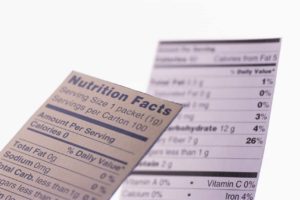Are you an evening snacker? You’re not alone. Even though people in the U.S. commonly eat their largest meal at the end of the day, many people still have a powerful urge to snack after dinner. Weight loss clients often tell me that they eat well all day but then everything falls apart in the evening. After dutifully sticking to their healthy, low calorie eating plan through breakfast, lunch, and dinner, they find themselves powerless to resist high-calorie salty snacks and sweets in the evening. It’s as if we just we run out of will power at the end of the day. But it turns out there may be a biological explanation for this.
This article also available as a podcast
Researchers at Oregon Health and Sciences University recently found that our appetite has a strong circadian (or, daily) rhythm that’s completely independent of the timing of our meals or our sleep patterns. No matter what eating and sleeping schedule the subjects in this study were on, their appetite peaked at 8pm and was lowest at 8am.
Now consider the usual dietary advice: We’re told to always eat breakfast and refrain from snacking after dinner. In other words, we’re supposed to eat when we don’t feel like it and stop eating just as our appetite reaches its peak. No wonder we struggle!
Shouldn’t You Just Eat When You’re Hungry?
I have to tell you that when I first read this research, my initial response was: Why fight biology? Why compel ourselves to eat breakfast if we’re not hungry and then force ourselves to stop eating right as our body’s signal to eat is strongest? Don’t our bodies usually know best about these things? Then again, our bodies obviously weren’t designed to live sedentary lives in which we are constantly surrounded by high-calorie foods.
We also go to bed a lot later and get sleep less than we used to. Sleep deprivation has a direct effect on hunger and appetite, making us feel hungrier and causing us to eat more than we do on days when we’re well rested. In particular, being under-rested seems to stimulate the desire for high-calorie foods.
It’s not surprising, therefore, that sleep deprivation is associated with weight gain. In fact, one recent study found that skimping on sleep every night for a week led to an average weight gain of 2 pounds! Fortunately, when the subjects in that study got a full night’s sleep every night for a week, they lost the weight.
That may not be much help if you’re under-rested because of a new baby or a demanding job or some other factor beyond your control. But if you’re sacrificing precious hours of sleep to hang out on Facebook or watch Family Guy marathons—and the number on the scale is inching upwards—it might be time to rethink your priorities.
Steven Shea is one of the scientists who did the research on appetite and circadian rhythms. As he explains, “You stay up later, during a time when you’re hungrier…and you’re more likely to eat during that time. Then you get less sleep, both of which contribute to weight gain.” It’s a perfect storm, isn’t it?
The 8pm Rule
One popular weight loss strategy is to never eat after 8pm. Seeing as people often eat a considerable number of recreational calories in the evening, following this rule could definitely help you lose some weight. On the other hand, it takes an awful lot of will-power to stick to the 8pm rule. And Shea’s research might explain why.
Going to bed earlier, as Shea suggests, could mean that you sleep through at least some of this period of craving and end up eating less. It would also probably mean that you get more sleep, which could reduce cravings for high-calorie foods the next day.
See also: Why We Overeat
“If weight loss is a goal,” Shea says, “knowing how your body operates will help you make better choices. Going to bed earlier, getting enough sleep, and choosing lower-calorie foods rather than higher-calorie foods in the evening can all help with weight loss.”
Originally published at QuickandDirtyTips.com
 True confessions: I recently noticed that my dietary choices of late have been…well…less than optimal. What’s a Nutrition Diva to do? In this week’s podcast, I remind my listeners (and myself) of the power of planning. So often, the reason my day doesn’t quite as planned is because I really don’t have a plan. See if any of these tips might help you get back on track.
True confessions: I recently noticed that my dietary choices of late have been…well…less than optimal. What’s a Nutrition Diva to do? In this week’s podcast, I remind my listeners (and myself) of the power of planning. So often, the reason my day doesn’t quite as planned is because I really don’t have a plan. See if any of these tips might help you get back on track.




